The world of sailing scene photography offers a unique opportunity to capture the beauty and essence of the open sea. Whether you’re a seasoned photographer or just beginning, there’s something inherently magical about documenting the grandeur of sailboats gliding across the water or the serene tranquility of a calm harbor. In this ultimate guide, we’ll explore the art of sailing scene photography, from mastering composition and choosing the right equipment to understanding lighting and post-processing techniques. By the end of this article, you’ll have a comprehensive toolkit to create stunning sailing scenes that truly showcase the beauty of marine life and the dynamic interplay between boats and their surroundings. Let’s embark on this journey together and unlock the secrets to capturing perfect marine views through the lens of your camera.
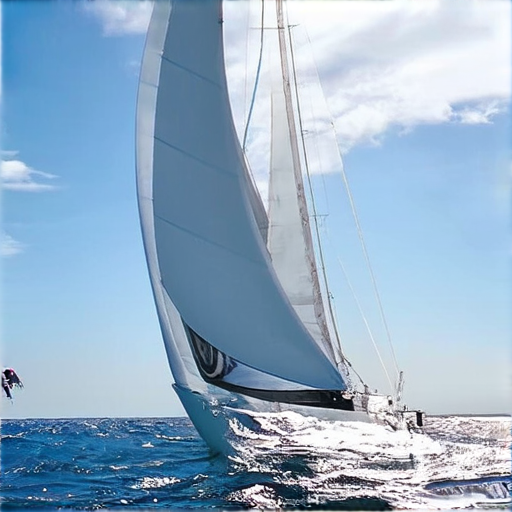
How to Take Pictures of Sailing
To capture stunning photos of sailing, consider the following tips and techniques:
1. Choose the Right Equipment
- Camera: Use a high-quality digital camera with fast autofocus capabilities. Mirrorless cameras and DSLRs are excellent choices due to their versatility and speed.
- Lens: Opt for a wide-angle lens for capturing vast landscapes and dynamic movement. A telephoto lens can help zoom in on details like sails or waves.
- Accessories: Invest in a sturdy tripod for stability, especially on unstable boats. Consider using a neutral density (ND) filter to control light exposure during bright conditions.
2. Prepare Thoroughly Beforehand
- Research Locations: Look for iconic sailing spots known for their unique scenery, such as coastal cliffs, sunsets, or dramatic cloud formations.
- Check Weather Conditions: Plan your trip around favorable weather to maximize photo opportunities and safety.
- Plan Your Route: Coordinate with the tides and wind patterns to find the best vantage points and lighting conditions.
- Understand Lighting: Schedule your shoots during the golden hour for soft, directional light that enhances textures and creates dramatic shadows.
3. Capture the Moment
- Focus on Motion: Use a fast shutter speed (at least 1/1000 of a second) to freeze the action of the boat moving through the water.
- Panning Technique: Keep the boat steady by panning with the boat’s movement. This helps maintain focus and captures dynamic compositions.
- Experiment with Angles: Try shooting from different perspectives, such as low angles to emphasize the boat’s size or high angles to capture the vastness of the sea.
- Suggestive Links: Explore more sailing photography tips and resources on Sailing Photo Awards .
4. Edit Your Photos
- Post-Capture Adjustments: Use photo editing software to adjust exposure, white balance, and color correction. Remove unwanted objects or people from frames.
- Raw Conversion: Convert your photos to RAW format if possible, as it allows for greater control over tonality and detail.
- Share Your Work: Consider submitting your best sailing photos to competitions like the Sailing Photo Awards for recognition and exposure.
5. Best Times to Shoot
- Dawn or Dusk: These times offer softer, more even lighting that highlights the boat’s silhouette against the sky or sea.
- Cloudy Days: Overcast skies can provide diffused light, reducing harsh shadows and creating a serene atmosphere.
- Stormy Conditions: Capture dramatic storm clouds or waves crashing against the boat for powerful, artistic shots.
By following these guidelines, you can create stunning sailing photographs that capture the essence of the sport and its beautiful surroundings.
The Best Lens for Sailing Photography
For sailing photography, the ideal lens depends on the type of shot you’re aiming for, but a telephoto lens is often recommended due to its ability to capture distant subjects with clarity. Here are our top recommendations:1. **Telephoto Lenses** – A 70-200mm lens is a versatile choice for most sailing photography needs. Its variable focal length allows you to adjust quickly between wide-angle shots of the boat and sailboat, and zoom in on details like rigging or the crew. – For extreme zooming, consider a 70-300mm lens, which provides a longer reach and is excellent for capturing distant boats or dramatic compositions. 2. **Wide-Angle Lenses** – Wide-angle lenses like the 24-60mm or 16-35mm are great for capturing the vast expanse of the ocean and the boat’s relationship with the horizon. They also allow for creative perspective effects. 3. **Fish-Eye Lenses** – If you’re aiming for unique and artistic shots, a fish-eye lens can distort the boat’s shape and create dramatic effects, adding a playful twist to your photography. 4. **Mirrorless Options** – For compact and lightweight options, mirrorless cameras with interchangeable lenses are a great choice. Look for lenses like the 45mm f/2.8 or 85mm f/1.8, which are known for their sharpness and low light performance.
Top Tips for Sailing Photography
– **Composition**: Use leading lines (the boat’s mast or sail) to draw the eye and create a sense of movement. – **Rule of Thirds**: Position the boat or subject so it’s not centered in the frame. – **Shutter Speed**: Capture fast-moving water and sails by using a high shutter speed, ideally around 1/1000 sec or faster. – **Tripod and Remote Trigger**: Use a sturdy tripod and remote trigger to keep your camera steady and avoid vibrations. For more sailing photography tips and inspiration, explore [Sailing Photo Awards](https://sailingphotoawards.com/) where we celebrate the artistry of sailing photography through stunning visuals and expert advice. Remember to check the weather forecast, plan your shoot during golden hour, and edit your photos carefully to bring out the vibrant colors and details of the sailboat and surroundings.
How to Gain Experience in Sailing
To acquire experience in sailing, follow these organized steps:
- Educate Yourself:** Start by learning the basics of sailing through books, online resources, or formal courses. Understand boat handling, navigation, and safety protocols.
- Take a Course:** Enroll in a sailing course to receive structured instruction and hands-on experience. Courses cover essential skills like navigation and boat maintenance.
- Volunteer or Work:** Seek opportunities with local sailing organizations or clubs. Volunteer for tasks like boat maintenance or cleaning to gain practical experience and meet experienced sailors.
- Join a Sailing Club:** Become a member of a club to participate in group sails, training programs, and competitions. This provides a supportive environment for skill development.
- Volunteer for Charity Sail Programs:** Contribute to programs that assist individuals with disabilities, offering a meaningful way to use your sailing skills while giving back to the community.
- Work on Sailing Vessels:** Consider working on tall ships or yachts through crew agencies. This offers intensive experience, though ensure you choose reputable agencies for quality training.
- Restore a Classic Boat:** Take on the challenge of restoring a vintage sailboat. This project teaches repair techniques and boat history, providing deep learning experiences.
- Participate in Regattas:** Join racing events to apply your skills in a competitive setting, enhancing your abilities through real-world application.
- Stay Informed:** Keep up with sailing news and trends by following blogs, watching videos, and reading articles. Engage with online forums for peer support and mentorship.
- Network with Experienced Sailors:** Attend seminars, conferences, and boat shows to meet professionals and mentors. Online forums and communities offer valuable connections and advice.
- Practice Regularly:** Aim to sail as frequently as possible, starting with short trips and increasing duration as confidence grows. Consistent practice enhances skill and comfort levels.
- Embrace the Lifestyle:** Use sailing as a means to explore new destinations, combining travel with skill development for a rich, educational experience.
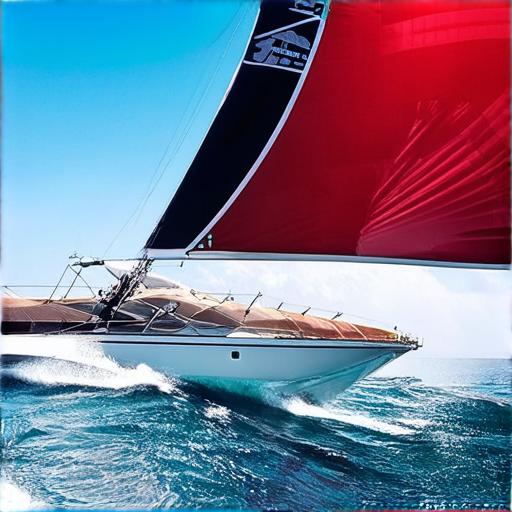
Essential Elements for Capturing Stunning Sailing Scenes in Photography
To capture stunning sailing scenes in photography, consider the following key elements:1. **Lighting**: – **Golden Hours**: The best lighting occurs during sunrise and sunset, providing soft, diffused light that enhances the drama of sailing scenes. The low-angle sun creates long shadows and highlights the shape and texture of sails. – **Cloud Cover**: Overcast days can still work well, as they diffuse light evenly, preventing harsh shadows. Look for dramatic cloud formations in the background.2. **Composition**: – **Leading Lines**: Use the sailboats as leading lines to draw the eye through the frame. This works especially well when the boats are moving towards or away from the camera. – **Rule of Thirds**: Position the boat and sails so they occupy two-thirds of the frame horizontally, leaving space for the background to add depth. – **Symmetry and Balance**: Capture the perfect balance between the boat, sails, and surroundings. Symmetrical compositions often look more visually appealing.3. **Timing**: – **Tide and Weather**: Plan your shoots around high tide for maximum spread of sails. Avoid strong winds that might distort the boat’s shape or make it difficult to control the camera. – **Seasonal Changes**: Different seasons offer unique lighting and weather conditions. Spring and fall often provide ideal lighting for vibrant sails and calm waters.4. **Camera Setup**: – **Angle**: Shoot from ground level or slightly below to emphasize the scale of the sails. A lower angle emphasizes the boat’s size against the horizon. – **Tripod**: Use a tripod for stability, especially in windy conditions, to keep the camera steady and prevent motion blur.5. **Background**: – **Horizon**: Include the horizon to add depth and perspective to the scene. A blurred horizon can enhance the sense of vastness. – **Reflections**: Look for reflections off the water surface to add sparkle and interest to the background.6. **Post-Processing**: – **Color Correction**: Adjust colors to enhance the mood of the scene. Warm tones during golden hours can make the photo feel more dynamic. – **Sharpness**: Use editing tools to fine-tune the focus and detail, ensuring the sails and boat appear crisp and clear.By mastering these elements, you can create striking sailing scenes that capture the essence of the sport and its connection to the sea. Explore more tips and inspiration on [Sailing Photo Awards](https://sailingphotoawards.com/) to elevate your photography.
Essential Elements to Consider When Photographing Stunning Sailing Scenes
To capture breathtaking sailing scenes, consider the following key factors:
- Lighting : Optimal lighting enhances the drama and details of sailing photos. Shoot during the golden hour or blue hours for soft, directional light that highlights the boat and sails.
- Composition : Frame your shots to emphasize the motion and scale of the sailboat. Use leading lines (e.g., the mast) to guide the viewer’s eye toward the horizon.
- Timing : Capture moments of action, such as a sail catching the wind or a boat maneuvering through waves. Time your shots during sunset or sunrise for vibrant colors and long shadows.
- Weather and Environment : Observe weather conditions to influence the mood of your photos. Calm waters reflect the sky, while rough seas add dynamic energy to the scene.
- Technical Settings : Use a tripod for stability, especially in moving environments. Experiment with aperture and ISO settings to ensure sharp focus on the boat and a blurred, ethereal background.
- Background and Reflections : Include elements like waves, clouds, or reflections to add depth and dimension to your photos.
- Post-Processing : Adjust exposure, color balance, and contrast to enhance the final image. Highlight textures and details to bring the sailing scene to life.
For more resources and inspiration, explore Sailing Photo Awards , a hub for sailing enthusiasts and photographers alike.
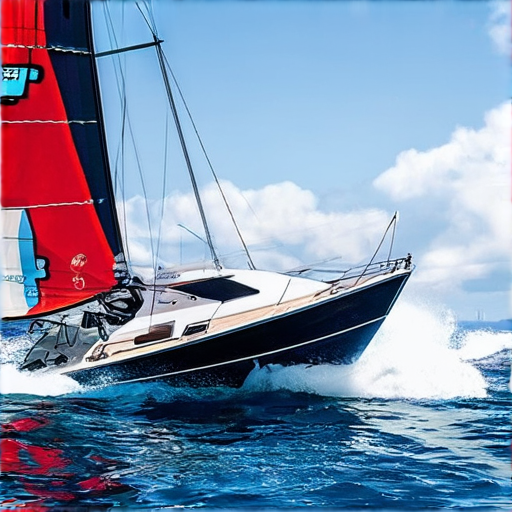
Considerations for Capturing Stunning Sailing Scenes
When photographing sailing scenes, several factors come into play to ensure your shots look great:
1. Lighting
Lighting is crucial for creating the right mood. Photograph during the golden hours (early morning or late afternoon) for soft, diffused light that minimizes glare and highlights textures. Avoid midday sun, which can cause harsh shadows and overexposure.
2. Composition
Composition is key to a dynamic shot. Use leading lines, such as the mast or boom, to draw the viewer’s eye toward the horizon. Experiment with symmetry for a balanced look or asymmetry for a sense of motion.
3. Motion
Capture the essence of motion by using a fast shutter speed to freeze action or a slower speed for a blurred effect. Panning with the boat’s movement can add dynamism to your shots.
4. Weather and Conditions
Monitor wind conditions for full sails and wave patterns. Calm waters offer serenity, while rough seas add drama. Check the weather forecast to plan accordingly and set the right mood.
5. Location
Choose a backdrop that complements your scene—calm bays for tranquility or stormy seas for power. Explore locations like Sailing Photo Awards ‘s featured spots for inspiration.
6. Subject Focus
Center your subject, whether it’s the boat, waves, or sky. Use a telephoto lens for a powerful look or a wide-angle lens for a broader perspective.
7. Color and Contrast
Enhance colors with filters or adjust white balance. High contrast between boat and sky can make your image stand out, but avoid overexposing.
8. Details
Highlight details like rigging with macro settings or soft focus for bokeh to add texture without distraction.
9. Post-Processing
Crop for better framing, adjust exposure, and fine-tune colors. Use contrast and sharpening judiciously to enhance details without losing quality.
By thoughtfully considering these elements, you can create captivating sailing scenes that showcase the beauty and power of the sea.
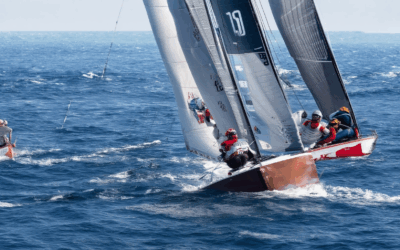
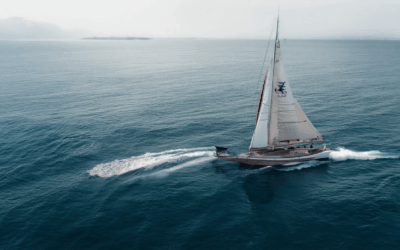
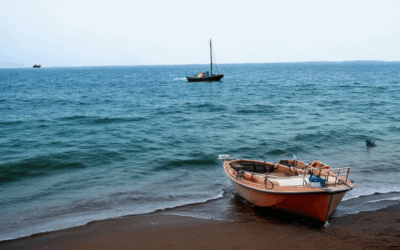
0 Comments